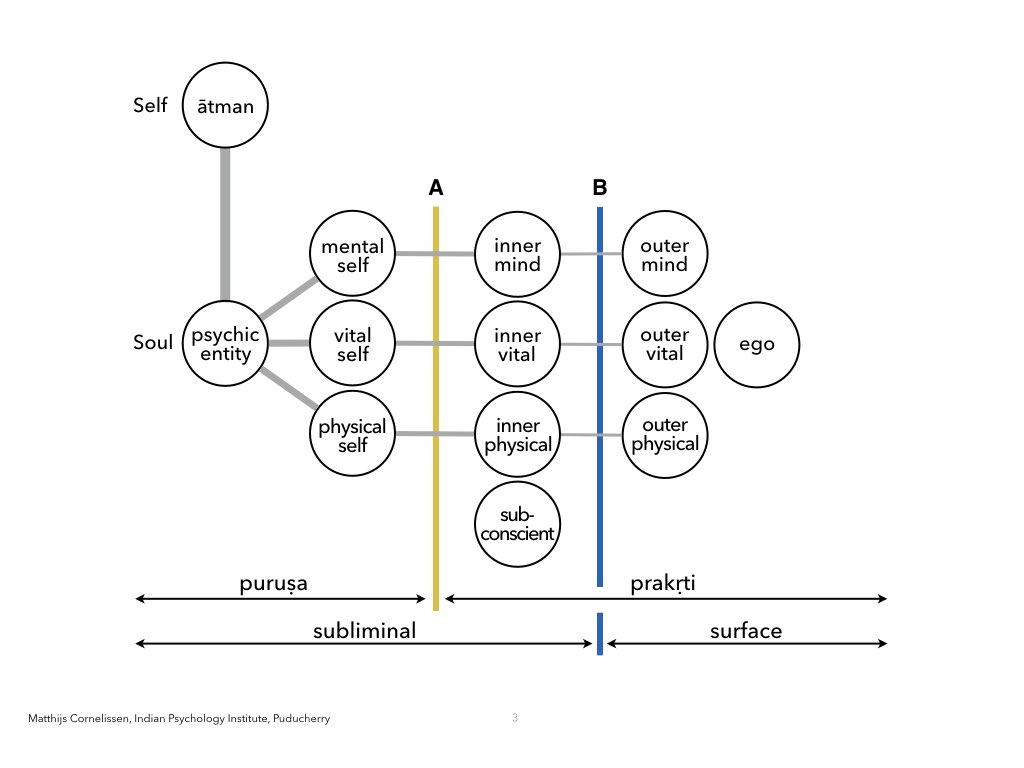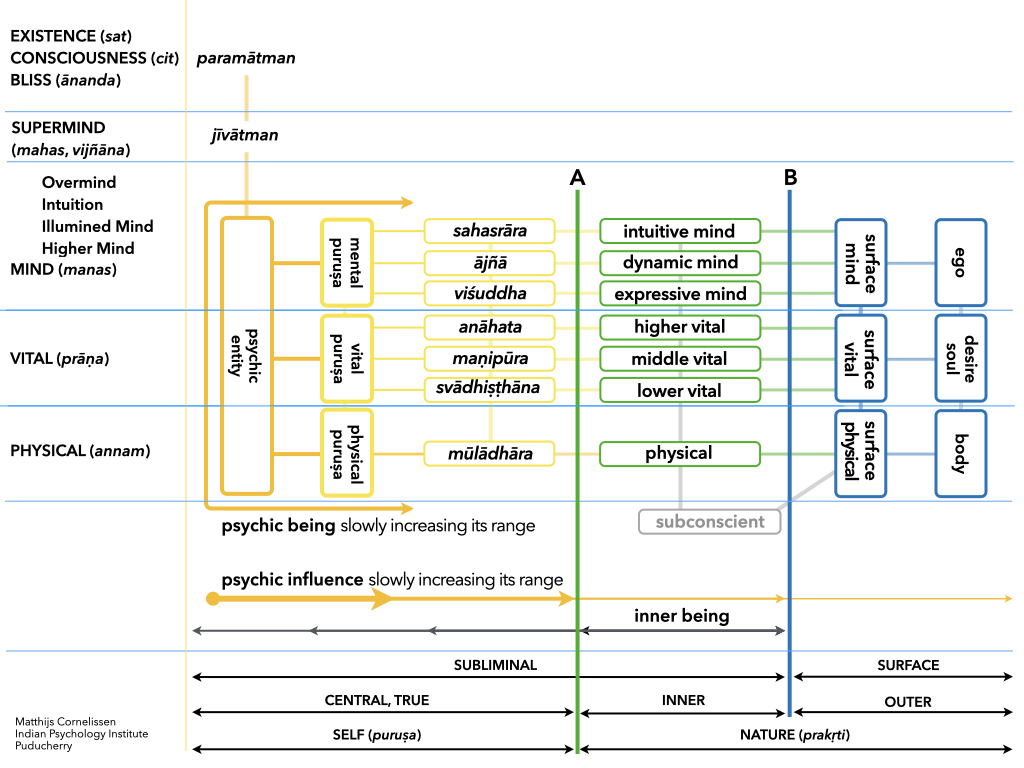



Advanced Psychology — VIII
Matthijs Cornelissen
last revision: 04 January 2025
two diagrams
To make it easier to visualise the relationships between the various concepts discussed so far, I will now put some of them together into two diagrams. The reader may keep in mind that reality is always much more complex than the models that can be made of it, and these diagrams are intended only to depict in graphic form how the different parts of the personality conceptually relate to each other. They are not intended to depict reality in any other way.

Figure 11b-2. A simplified overview of the structure of the personality
Figure 11b-2 indicates the most prominent elements of human nature together in a simple, two-dimensional diagram. The ego and the outer nature are on the right. The only thing that stands out in the outer nature tends to be the ego. Another important issue that has been made visible even in this highly simplified diagram is that the inner nature, which in mainstream psychology would be counted under the self, is in Indian systems like Vedānta and Sāṁkhya unambiguously part of prakṛti, the non-self. For a more detailed discussion of what is considered outer and inner in different contexts, please see the section of this chapter dealing with the borders of the Self .

Figure 11b-3. A more detailed depiction of the same
Figure 11b-3 is a slightly more detailed rendering of the same model.
- Along the vertical axis, there are the various planes belonging to the Sevenfold Chord of Being.
- Within the mental plane, four types of consciousness have been added that belong between the ordinary mind and the next higher layer, the Supermind.
- Within the ordinary mind, a distinction has been made between three different types, and we have done the same for the vital. Together with the subtle physical, this leads to the seven different levels of the inner nature that correspond to the seven cakras.
- Below the diagram a few additional terms indicate the different areas in the concentric system. As in Figure 1-2-4b, we have indicated on the left of line A, the Self, the puruṣa, the carrier of our individual consciousness. On the right of line B there is the outer nature, which is all most people are aware of. In between the two vertical lines there are the inner worlds, which are still part of prakṛti.
- The arrow-head lines under “inner being” indicate that when one does not any longer centralise one's "I" in the ego and the outer nature, one can put the centre of one's consciousness virtually anywhere in the "inner being": The "I" can then be experienced as located in one's inner nature (between line A and line B), in one of the cakras, in a plane-specific Self, or ultimately in the Psychic being.
- The three arrow-lines under “psychic influence” indicate how the psychic being evolves over time: It gradually brings first the true being, then the inner being, and, ultimately even the outer being under its control.
- The cosmic/transcendent Self — whether in its unique, individualised aspect or in its shared unitary aspect (the jīvātman or the paramātman) — is often experienced as if it is in some peculiar way accessed by going "above" the manifestation. In this model it has been depicted directly above the psychic entity as the psychic is its most comprehensive representative "down here" in the manifestation.
With this, we have completed our account of the main terms Sri Aurobindo uses to describe the structure of the personality and the topography of consciousness in human nature. What remains is to provide some more context.
To receive info on
Indian Psychology and the IPI website,
please enter your name, email, etc.